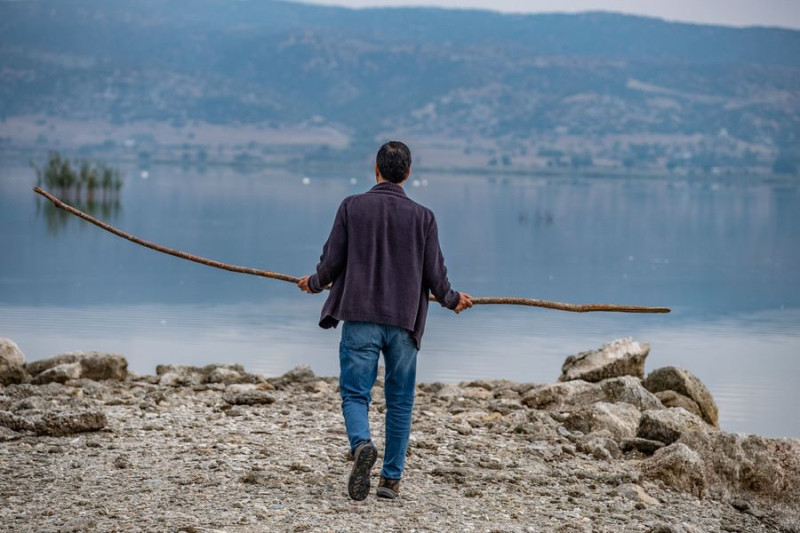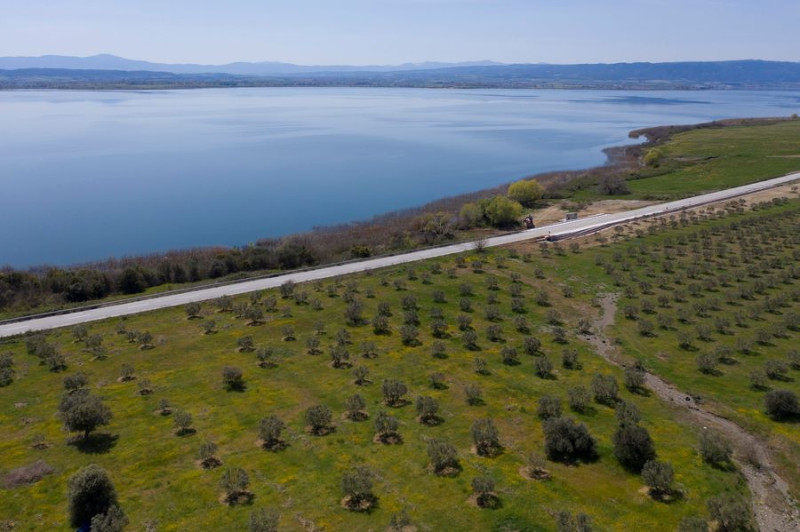Decrease in rains, increase in temperature and water withdrawals, lower the level in the 4 natural lakes of K. Macedonia
Sparse rainfall and an increase in temperature, with a parallel intensity of irrigation through water withdrawals, are the main causes for the downward trend, in the last decade, of the level in 4 natural lakes of Central Macedonia, Volvi, Koroneia, Doirani and Picrolimni .
The conclusions are drawn from a report by the Hellenic Center for Biotopes – Wetlands of the Goulandris Museum of Natural History, which has been operating since 2012 the National Lake Water Monitoring Network under the supervision of the General Directorate of Waters of the Ministry of the Interior.
“The lake region of Central Macedonia is experiencing the climatic conditions that have already, more or less, been described by the global and regional climate models for the Mediterranean region. Characteristically, from the beginning of 2024, the values of the average maximum monthly temperature are at the upper levels of the period 2013-2023 and the annual amount of rain for the years 2023 and 2024 is quite low. “Climate change is causing hydrological pressures on lakes and increasing the need to reduce water withdrawals from lake watersheds,” the report states.
As factors contributing to the phenomenon, it is not only the low level of precipitation in the lake areas in recent years but also the increased temperatures that increase the loss of water from the lakes both directly, through increased evaporation, and indirectly through increased irrigation needs.
“Although water withdrawals directly from the lakes (with the exception of Volvi) are not carried out to cover irrigation needs, however, their coverage by pumping from underground aquifers that are in communication with the lakes (such as Koronia) leads in the humiliation of the level of both” is noted in the report.
As explained to the Athenian/Macedonian News Agency, the hydrogeologist at EKBY, Irini Varsami, the rainfall, which in the last two years has been at very low levels, affects the water level. The temperature also contributes to the phenomenon, either directly by evaporating some amount from the lake, or indirectly by increasing the irrigation needs of the area.
“It is definitely a climate pattern that has been repeated in recent years and especially this year, the record we observed was in temperatures. Specifically for the 4 lakes, if we look at the nearest station of the National Observatory, we will find that the temperatures throughout the year are at record values for the last decade”, says Ms. Varsami.
“In Koroneia”, he continues, “we don’t have withdrawals for irrigation, but since the underground aquifer communicates in essence with the lake and the surrounding area draws quantities of water from the underground aquifer for irrigation, the lake is also affected”.
More generally, in the specific 4 lakes, according to EKBY measurements, a downward trend of the level can be seen in recent years and therefore of their total volume.
“Now, when we are talking about a lake like Koroneia which is generally shallow, then the total amount it loses will be more pronounced in the result”, adds Ms. Varsami.
Falling course of the level
The downward trend in lake levels is particularly pronounced this year, based on values from the National Water Monitoring Network. The levels of all four lakes, during 2024 (until August) are stable at the lower levels of the values of the period 2013-2024, but without being – at least so far – the lowest. The period with the lowest levels was in the year 2013 until the beginning of 2014. In fact, for the Koroneia, Doirani and Picrolimni lakes, their lowest value was also measured then.
During the years 2014 – 2015, the level of all four lakes rose relatively sharply, from 2 meters up to 2.5 meters, as in the case of Lake Koronia, which is due to frequent rainfall. From 2016 onwards, a downward trend is observed until 2019. In this year, the minimum level of Volvi is observed for the 12 years we are going through. From the year 2020 until August 2024, the average level of lakes Volvi and Koroneia seems to stabilize following the pattern of annual rainfall. The level of Pikrolimni from 2020 onwards, decreased again, causing quite often even its drying up, as this summer.
The situation is better in Doirani
An exception in the picture above is the level of Lake Doirani, which after the rise in 2015, continued to rise until 2018, when its average annual value stabilized until 2020, the year from which the downward course of its level begins . Until 2022, its annual rate of decline was less than half a meter. However, from 2022 onwards, the annual drop in its level seems to exceed one meter, again following the rainfall pattern of the last three years.
“In Doirani, there does not seem to be a particular problem, i.e. a sharp drop in the level compared to the other 3 lakes, since, as shown in the diagrams of the decade, the level is maintained at one level, which is attributed to the fact that there are no special pumpings in the area for irrigation”, concludes Mrs. Varsami.
Source: Skai
I have worked as a journalist for over 10 years, and my work has been featured on many different news websites. I am also an author, and my work has been published in several books. I specialize in opinion writing, and I often write about current events and controversial topics. I am a very well-rounded writer, and I have a lot of experience in different areas of journalism. I am a very hard worker, and I am always willing to put in the extra effort to get the job done.












